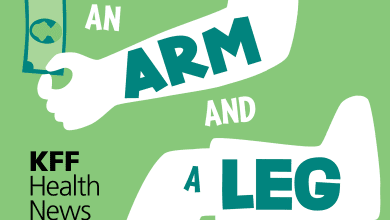Even Well-Intended Laws Can’t Protect Us From Inaccurate Provider Directories
If in case you have medical insurance coverage, likelihood is you’ve been totally exasperated sooner or later whereas looking for an accessible physician or psychological well being practitioner in your well being plan’s community.
It goes like this: You discover a number of suppliers in your plan’s listing, and also you name them. All of them. Alas, the quantity is improper; or the physician has moved, or retired, or isn’t accepting new sufferers; or the subsequent accessible appointment is three months away. Or maybe the supplier merely will not be in your community.
Regardless of a spate of state and federal rules that require extra correct well being plan directories, they will nonetheless comprise quite a few errors and are sometimes maddeningly outdated.
Flawed directories not solely impede our means to get care but in addition sign that well being insurers aren’t assembly necessities to supply well timed care — even when they inform regulators they’re.
Worse, sufferers who depend on misguided listing data can find yourself going through inflated payments from docs or hospitals that change into outdoors their community.
In 2016, California implemented a law to manage the accuracy of supplier directories. The state was attempting to handle long-standing issues, illustrated by an embarrassing debacle in 2014, when Lined California, the insurance coverage market that the state shaped after the passage of the Reasonably priced Care Act, was compelled to drag its error-riddled listing inside its first yr.
Additionally in 2016, the federal Facilities for Medicare & Medicaid Companies demanded more accurate directories for Medicare Benefit well being plans and insurance policies bought by means of the federal ACA market. And the federal No Surprises Act, which took impact this yr, extends similar rules to employer-based and particular person well being plans.
California regulation and the federal No Surprises Act stipulate that sufferers who depend on data of their supplier directories and find yourself unwittingly seeing docs outdoors their networks can’t be required to pay greater than they might have paid for an in-network supplier.
Sadly, inaccurate directories proceed to plague our well being care system.
A study published in June within the Journal of Well being Politics, Coverage and Regulation analyzed information from the California Division of Managed Well being Care on listing accuracy and well timed entry to care. It discovered that in the most effective case, customers might get well timed appointments in pressing circumstances with simply 54% of the docs listed in a listing. Within the worst case: 28%. For common care appointments, the most effective case was 64% and the worst case 35%.
A key takeaway, the authors write, is that “even progressive and pro-consumer laws and rules have successfully failed to supply substantial safety for customers.”
Few individuals know this higher than Dan O’Neill. The San Francisco well being care government referred to as native main care docs listed within the listing of his well being plan, by means of a serious nationwide service, and couldn’t get an appointment. No person he talked to might inform him whether or not UCSF Well being, one of many metropolis’s premier well being methods, was in his community.
“I spent near per week attempting to unravel this drawback and ultimately had to surrender and pay the $75 copay to go to pressing care as a result of it was the one choice,” O’Neill says. “I now stay a seven- or eight-minute stroll from the principle UCSF buildings, and to this present day, I don’t know whether or not they’re in my community or not, which is loopy as a result of I do that professionally.”
Shopper well being advocates say insurers usually are not taking listing accuracy significantly. “We’ve well being plans with hundreds of thousands of enrollees and a whole bunch of hundreds of thousands in reserves,” says Beth Capell, a lobbyist for Sacramento-based Well being Entry California. “These individuals have the assets to do that in the event that they thought it was a precedence.”
Business analysts and tutorial researchers say it’s extra difficult than that.
Well being plans contract with a whole bunch of 1000’s of suppliers and should consistently hound them to ship updates. Are they nonetheless with the identical apply? On the identical tackle? Accepting new sufferers?
For docs and different practitioners, responding to such surveys — typically from dozens of well being plans — is hardly on the high of their to-do record. Insurers sometimes provide a number of well being plans, every with a unique constellation of suppliers, who don’t at all times know which of them they’re in.
The regulation provides insurers some leverage to induce suppliers to reply, and an entire business has sprung up round amassing supplier updates by means of a centralized portal and promoting the data to well being plans. The inaccuracy drawback stays, nevertheless. Well being plans and suppliers typically have outdated information methods that don’t talk with one another.
A big enchancment in well being plan directories would require “extra connectivity and interoperability,” says Simon Haeder, an affiliate professor at Texas A&M College’s Faculty of Public Well being and a co-author of the research on listing accuracy and well timed entry.
Till that day comes, you’ll need to fend for your self. Be diligent when utilizing your well being plan’s supplier listing. It’s best to use it as your first cease — or to test whether or not a health care provider really helpful by a pal is in your community.
Keep in mind the legal guidelines that say you’ll be able to’t be charged out-of-network charges if the physician you go to was listed in your well being plan’s listing? You’ll must show that was the case. So take a screenshot of the listing displaying the supplier’s identify and put it aside. Then, name the physician’s workplace to double-check. Take notes and get the identify of the individual you talked to. If there’s a discrepancy, name your well being plan, too.
In the event you discover an inaccurate entry, report it to your well being plan. California regulation requires plans to supply directions for customers to try this. In case you are in a business well being plan, your coverage is probably going regulated by the Division of Managed Well being Care. You’ll be able to lodge a grievance by means of the division (888-466-2219 or www.healthhelp.ca.gov). Since California’s regulation on supplier directories took impact, the division has helped resolve 279 complaints, stated spokesperson Rachel Arrezola.
In case your plan has a unique regulator, the division can level you in the suitable path.
In case you are one of many roughly 6 million Californians in a federally regulated employer or union plan and also you get an enormous out-of-network invoice from a health care provider who was listed in your well being plan listing, you’ll be able to file an enchantment by means of the workplace arrange for that function (800-985-3059 or www.cms.gov/nosurprises).
Finally, efforts to enhance the accuracy of supplier directories are a part of a broader push for better transparency of well being care costs and simpler entry to affected person information. All of that can require a extra open data superhighway.
This story was produced by KHN, which publishes California Healthline, an editorially unbiased service of the California Health Care Foundation.



